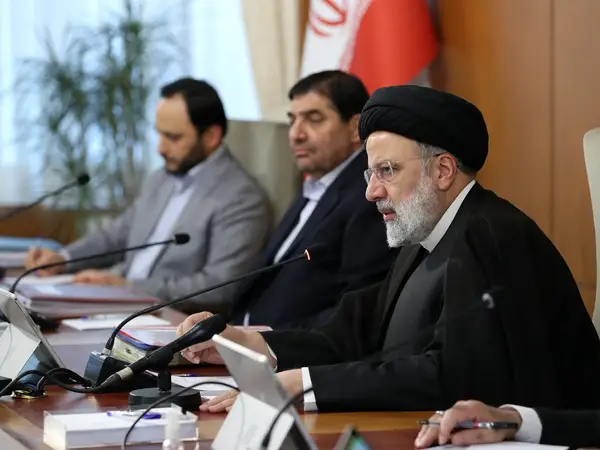A hacktivist group has broken into servers of the Iranian president’s office and leaked troves of sensitive data, proving corruption, conflicts and an ongoing nuclear expansion.
The hacktivist group ‘Uprising till Overthrow' claimed Monday that it breached 120 servers of the presidential office, getting access to internal communications, meetings minutes, President Ebrahims Raisi’s online conference platforms and about 1,300 computers inside the office.
In one of the documents, the security chief of Fordow nuclear plant -- an Iranian underground uranium enrichment facility located 20 miles (32 km) northeast of the Iranian city of Qom – had asked for about 150 hectares of public land to be given to the nuclear facility to increase its security buffer zone as work continues on Iran's nuclear capabilities.
Earlier in May, the group, affiliated with the Albania-based opposition Mojahedin-e-Khalq (MEK) group -- People's Mojahedin Organization of Iran, hacked into the Islamic Republic’s foreign ministry servers, disabling 210 sites and online services and leaking another large batch of documents.
In the new cyberattack, the group is said to have gained access to “tens of thousands confidential documents” but has so far released only a fraction of them. The number of the published documents is still so large that analyzing them will take days if not weeks.
The group also claimed that their access to the internal systems of the president’s office was so unbounded that they sent e-mails to the office’s recipients address list with photos of the leaders of MEK and photos of Iran’s Supreme Leader Ali Khamenei and President Raisi with red crosses over them as well as slogans of “Death to Khamenei” and “Hail to Rajavi”, the current leader of the opposition group.
The president’s office immediately reacted, denying that “the official website of the president” was down due to any attack. However, the regime cannot win this on a technicality as the group had not claimed to hack the frontage of the site but the internal servers.
Among the released documents, there is correspondence between the president’s office and the office of the secretary of Iran’s Supreme National Security Council (SNSC) under besmirched chief Ali Shamkhani, confirming rumors that the regime's top security chief was forced out after the President said he had failed to do enough to quash riots, in spite of causing the death of 750 civilians and arresting 30,000 more.
In the letter addressed to Shamkhani, the chief of staff of the president, Gholam-Hossein Esmaili, criticized the security chief for a lack of insight into the wave of protests that engulfed Iran following the death in custody of 22-year-old Mahsa Amini. With a condescending tone, Esmaili rebuked Shamkhani’s office for “inconsistencies, deficiencies, and defects of the country's intelligence systems”. The letter tells the shamed security chief the regime “expected more.”
There are numerous other documents that showed how the president’s office is trying to keep the government afloat in the face of bouts of incessant rallies without any practical strategy and tactic. Several of such documents pertained to sessions held to find ways to quell the protests inside Iranian universities.
A large number of the leaked documents provide evidence of the administration’s financial exploitation in cooperation with different organizations. One such example is a letter that shows the country’s armed forces sold 400 million euros to the central bank, while another document shows that the armed forces also sell foreign currency gained from export of oil in the black market.
In the letter addressed to the head of the General Staff of the Armed Forces, the head of the Central Bank of Iran, Mohammad-Reza Farzin, said the armed forces must supply the currency obtained from the sale of oil to the central bank, instead of selling the foreign currency to the cash-strapped bank. In March, Iran’s parliament approved legislation according to which the General Staff of the Armed Forces is allowed to export three billion euros worth of crude oil and oil products through small private refineries.
The ongoing brutal surveillance operations were exposed in another document, in which the commander-in-chief of the Revolutionary Guards asked Vice President Mohammad Mokhber to provide the financial means to revamp the surveillance cameras of the capital’s subway stations so that they can be used to quash the protests. In the letter, Hossein Salami said the CCTV cameras and the subway monitoring system in Tehran are old, leading to their limited functionality in the crackdown of the popular protests. The amount needed for new cameras is said to be over $32,000 for each station. Tehran has about 150 subway stations, which means spending nearly $5 million towards a security state.
